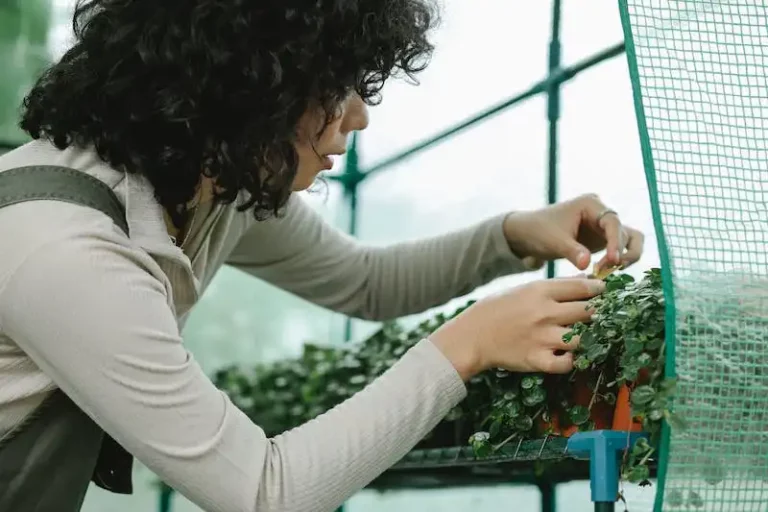If you are a plant lover, you are probably familiar with the wide range of planters available on the market. There are so many options to choose from that it can be overwhelming. But when it comes to snake plants, choosing the right pot is essential for their successful growth.
When selecting a pot for your snake plant, there are a couple of factors to consider. One of the most important things to keep in mind is that snake plants need a well-draining pot. They cannot tolerate sitting in water, so a pot with drainage holes is a must. This will help to avoid the problem of overwatering, which can lead to root rot and potentially kill the plant.
Another consideration is the size of the pot. Snake plants are relatively slow-growing, so they don’t need a lot of space to spread their roots. However, they do prefer to have enough depth to anchor themselves, so a pot that is a little deeper than it is wide is usually the best choice. This will also help to prevent the plant from becoming top-heavy and tipping over.
According to lotusmagus.com, a popular source for plant care tips, snake plants tend to do well in pots made of materials that are heavier in nature, such as ceramic or clay. These materials help to anchor the plant and prevent it from being easily tipped over. Additionally, clay pots are porous, allowing excess water to evaporate more easily and preventing the soil from becoming waterlogged.
One popular option among snake plant enthusiasts is a terra cotta pot. These pots have a rustic and earthy design that complements the natural beauty of the snake plant. They are also porous, which allows for good airflow and prevents overwatering. Terra cotta pots are readily available at most garden centers and can also be found online on websites like Amazon.
For those who prefer a more modern and sleek design, there are also plenty of options available. Ceramic pots and fiberglass pots are both great choices for snake plants. They come in a variety of colors and sizes, allowing you to find the perfect one to match your home decor. These pots are often lighter in weight than terra cotta pots, making them easier to move around if needed.
In conclusion, the best pot for a snake plant depends on your personal preferences and the specific needs of your plant. Whether you choose a terra cotta pot or a ceramic pot, the most important thing is to ensure that it provides adequate drainage and enough depth for the roots. By following these guidelines, you can create the perfect home for your snake plant and enjoy its gorgeous growth for years to come.
How To Choose A Perfect Pot For Your Snake Plant
When it comes to selecting the right pot for your snake plant, there are a few important factors to consider. The pot you choose can greatly impact the health and growth of your snake plant, so it’s important to make the right choice.
Snake plants are full sun plants that like warm weather, so it’s important to select a pot that can keep the roots cool. Clay pots are a popular choice as they are durable and provide good drainage. However, plastic pots can also be used, especially if you frequently forget to water your plants.
It’s important to select a pot that is slightly larger than the current pot your snake plant is in. Snake plants prefer to be slightly root bound and usually grow better when their roots are confined. A pot that is about 1-2 inches larger in diameter than the current pot is usually a good choice.
When choosing a pot, consider the material and weight. Clay pots tend to be heavier and can help prevent your snake plant from becoming top-heavy and tipping over. Plastic pots, on the other hand, are lighter and easier to move around.
Ensure that the pot you choose has proper drainage holes at the bottom. Good drainage is crucial to prevent overwatering and root rot. Additionally, avoid using saucers or trays under the pot to prevent water accumulation.
It’s also important to consider the aesthetic aspect when choosing a pot. Snake plants have unique leaves and come in different sizes and colors. A pot that complements the unique characteristics of your snake plant can enhance the overall appearance of the plant.
Here are some tips to consider when selecting a pot for your snake plant:
- Choose a pot that is slightly larger than the current pot
- Ensure the pot has proper drainage holes
- Consider the weight of the pot
- Select a pot that complements the unique characteristics of your snake plant
- Avoid using saucers or trays under the pot
- Consider using clay or plastic pots depending on your watering habits
By following these tips, you can ensure that your snake plant has the perfect pot to thrive and grow in. Remember, the right pot can make all the difference for your snake plant’s health and appearance.
Frequently Asked Questions about Choosing Pots for Snake Plants
- What kind of pot is best for a snake plant?
- Should I use a plastic or clay pot for my snake plant?
- How often should I water my snake plant after repotting?
- Can I use fertilizer in the pot for my snake plant?
Choosing the perfect pot for your snake plant is an important decision that can greatly impact its overall health and growth. Whether you prefer clay or plastic pots, make sure to select one that provides good drainage and complements the unique characteristics of your snake plant. Following these guidelines will help ensure that your snake plant thrives and remains healthy for years to come.
Know Before You Buy
When it comes to choosing the best pot for your snake plant, there are a few key factors to consider. One of the most important tips is to understand the needs and preferences of snake plants.
Firstly, snake plants can be grown indoors or outdoors, so it’s essential to decide where you want to place them. If you’re planning to grow your snake plant indoors, you might want to consider a pot made of wood or ceramic. These materials can provide a more natural and stylish look that complements your indoor decor.
If you’re opting for a larger pot, you should be mindful of the size of the snake plant. The general rule of thumb is that the pot should be 1 to 2 inches larger in diameter than the root mass. This extra space allows the roots to expand properly without becoming cramped or crowded.
Another important consideration is the pot’s drainage holes. Snake plants require well-drained soil to prevent the roots from becoming waterlogged. The presence of drainage holes in the pot is essential for excess water to escape, preventing root rot. Without proper drainage, snake plants can suffer from overwatering, which is a common reason for their decline.
When it comes to the potting mix, a well-draining soil blend is crucial for snake plants. A mix of potting soil, perlite, and sand can ensure proper drainage and moisture retention. It’s also important to wait until the last watering has dried down before watering again to avoid overwatering.
Before deciding on the best pot for your snake plant, you might have a few questions in mind. Some common questions include the suitable pot materials, the size of the pot, and the best soil mix. By considering these factors, you can ensure that you’re making the best choice for your snake plant.
Overall, choosing the right pot for your snake plant is essential for its growth and health. Whether you opt for a ceramic pot, a wooden planter, or a concrete pot, be sure to consider the size, drainage, and style that suits your plant’s needs. With the right pot, your snake plant will not only grow larger and healthier but also become a gorgeous addition to your indoor or outdoor space.
Do You Have To Repot The Snake Plant
Repotting a snake plant is not always necessary, but there are some situations that might make it a good idea. Here are a few reasons why repotting may be necessary:
1. Growth: Snake plants can become root-bound or overcrowded over time, especially if they have been in the same pot for several years. Repotting allows the roots to spread out and gives the plant more room to grow.
2. Potting Mix: Over time, the potting mix can become compacted or break down, making it less effective at providing drainage. Repotting gives you the opportunity to refresh the potting mix, which is essential for the plant’s health.
3. Root Health: Repotting gives you a chance to check the roots for any signs of damage or disease. If you notice any root rot or other issues, repotting can help prevent the spread and allow the plant to recover.
4. Size: If your snake plant has become too large for its current pot, repotting into a larger container will give it more space to grow. However, keep in mind that snake plants prefer to be slightly root-bound, so don’t jump to repotting if the plant is just a little snug in its pot.
5. Pot Material: Different pot materials have different characteristics that can affect the plant’s health. Terracotta pots are porous and allow the soil to dry out more quickly. Plastic pots, on the other hand, hold moisture better. Choose a pot material that suits the needs of your snake plant.
When repotting your snake plant, here are some tips to keep in mind:
– Choose a pot that is about 1-2 inches larger in diameter than the current pot to allow the roots to expand.
– Make sure the new pot has drainage holes to avoid the risk of overwatering.
– Use a well-draining potting mix that is suitable for snake plants.
– Consider using a mix of potting soil, perlite, and sand to create a blend that promotes good drainage.
– Gently remove the snake plant from its current pot, being careful not to damage the roots.
– If the roots are tightly packed, you can gently trim the outer roots to encourage new growth.
– Before repotting, check the health of the roots and remove any damaged or dead ones.
– Once you have repotted the snake plant, water it well and place it in a suitable location.
– Avoid exposing the snake plant to direct sunlight as it can scorch the leaves.
– Check the moisture level in the potting mix regularly and water only when it’s slightly moist.
In conclusion, repotting a snake plant is not always necessary, but it can be beneficial in certain situations. By repotting, you give your snake plant the opportunity to grow and thrive in a healthier environment. Just remember to choose the right potting mix, pot material, and location for your snake plant, and it will reward you with its graceful beauty.
For more information, please visit: www.lotusmagus.com




